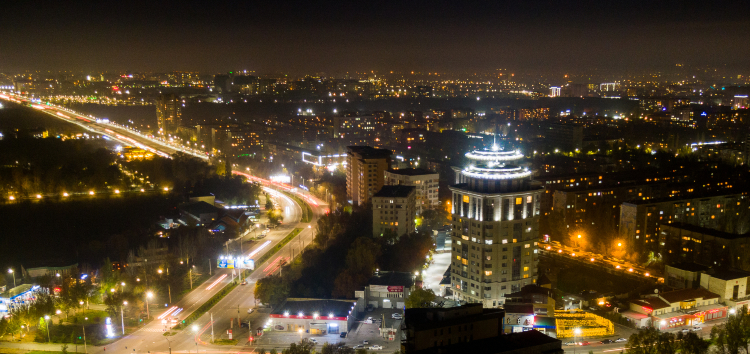
Central Asia’s growth rate in 2023 has been revised upward to 5.7% Growth rate in 2024 will continue at 5.9% International trade, China’s economic restart, and government spending are key factors
Central Asia’s economies showed strong growth in the first half of 2023, supported by the resumption of international trade and tourism, and high levels of migration and remittances from Russia, according to the latest report from the European Bank for Reconstruction and Development (EBRD). The Regional Economic Outlook (REP) report has been published today. According to the bank, the region’s GDP growth rate is expected to remain strong at 5.7% in 2023 and 5.9% in 2024.
Recent growth, driven by government spending, China’s economic reopening, intermediary trade with Russia, remittances, tourism, and business relocation from Russia, is likely to continue. However, REP notes that rising borrowing costs could impact the size and appetite for investment in the region. At the same time, recent disruptions to water and energy supplies may prompt long-overdue tariff reforms and improved resource management.
Kazakhstan’s economy is expected to grow by 5.0% in both 2023 and 2024, despite uncertainty due to oil prices. The country has seen significant expansion in sectors such as retail trade, wholesale trade, and construction. There has also been an increase in public and private investment in infrastructure, transportation, and warehousing, reflecting Almaty’s growing role as a distribution hub serving Central Asian markets. However, the ongoing war in Ukraine could have a negative impact on the operation of the Caspian Pipeline Consortium terminal in the Black Sea, potentially disrupting Kazakhstan’s oil exports.
The Kyrgyz Republic’s GDP is expected to grow by 4.6% in 2023 and 7% in 2024. The country’s economic growth slowed to 2.9% year-on-year in the first seven months of 2023 due to a contraction in metal (mainly metal) production. gold) and the agricultural sector. At the same time, the domestic textile sector boomed thanks to strong external demand. Tourism also expanded significantly, sparking growth in food production, hospitality, and retail and wholesale trade. REP warns that Kyrgyzstan’s outlook could be worsened by energy and water shortages, as well as secondary sanctions related to Kyrgyzstan’s significant role in intermediary trade with Russia.
Mongolia’s economy could grow by 7.2% in 2023 and 7.5% in 2024 due to Chinese demand for the country’s goods, the opening of a new railway linking the Tawang Tolgoi coal deposits to China, and the start of Mongolia’s underground production. is high. Oyu Tolgoi mine. The tourism sector has fully recovered, contributing to improved performance in the hospitality and cashmere industries. Strong growth in exports, mining and tourism could strengthen the outlook. Tightening global credit conditions and China’s economic slowdown are the main downside risks.
Tajikistan’s economy is expected to grow strongly by 7.5% in both 2023 and 2024. This is due to increased regional cooperation, public investments (particularly in water and energy infrastructure), remittance inflows from Russia, and strong performance in the manufacturing and agricultural sectors. It is an important influencing factor. Slower economic growth in China and potential conflicts over cross-border water resources could negatively impact the outlook.
Uzbekistan’s GDP growth rate is expected to reach 6.5% in both 2023 and 2024, supported by strong domestic demand, rising nominal wages and credit growth. Sectors such as retail trade, construction, services and agriculture are particularly strong. Well-managed initial public offerings (IPOs) and privatizations could strengthen the outlook. Further declines in remittances (particularly from Russia), aging infrastructure and water supply issues are factors that could hinder growth.

